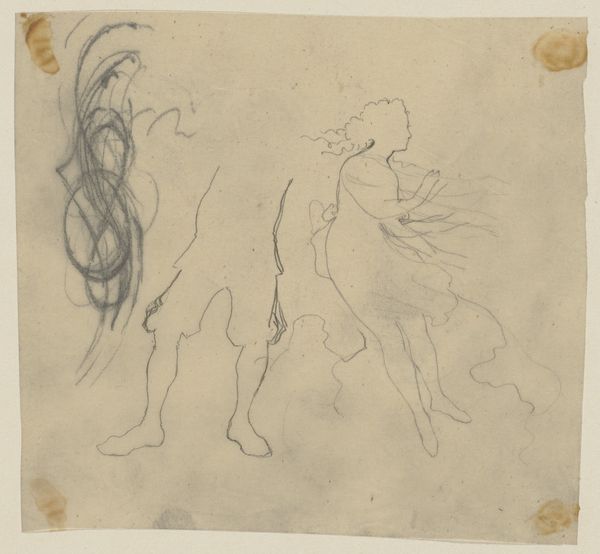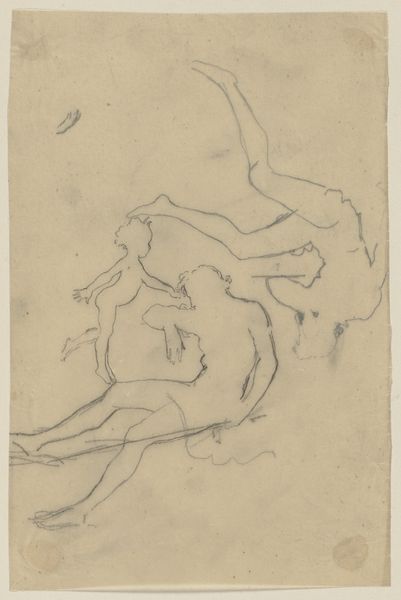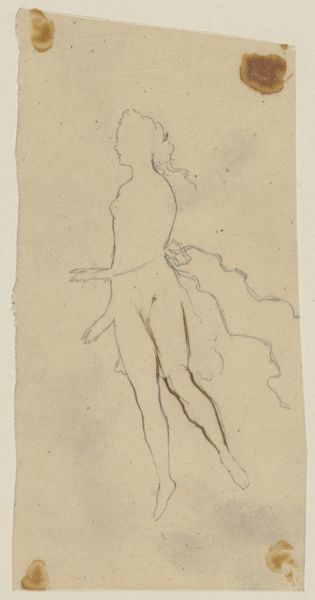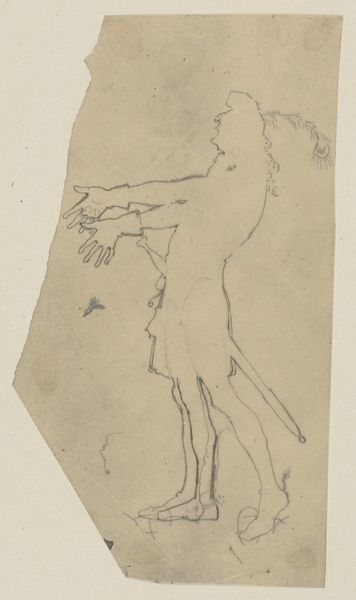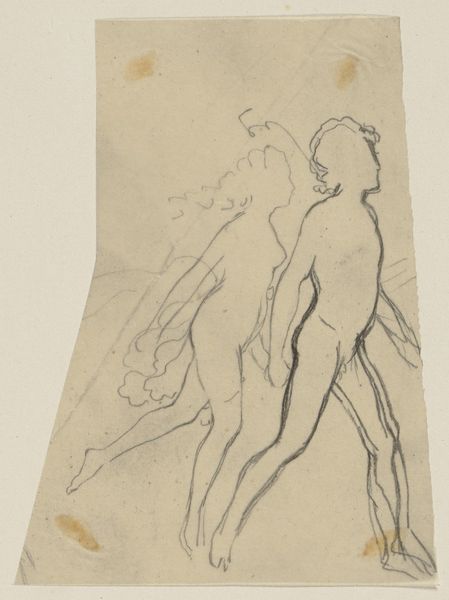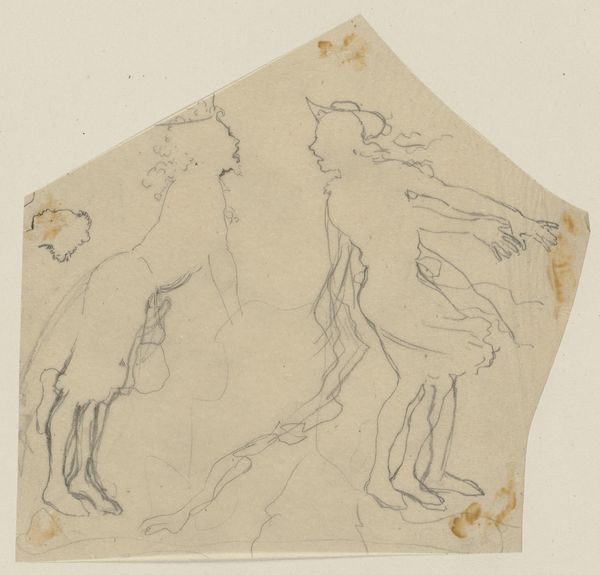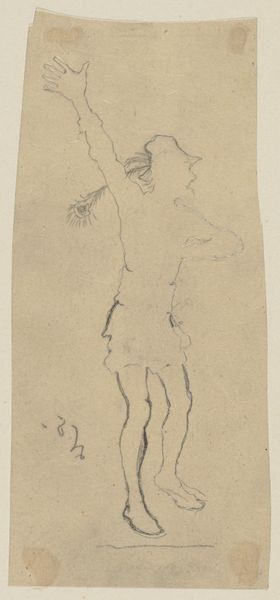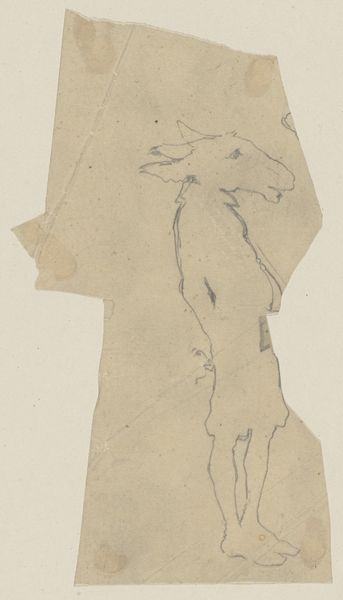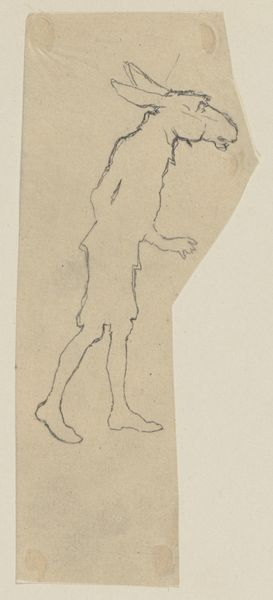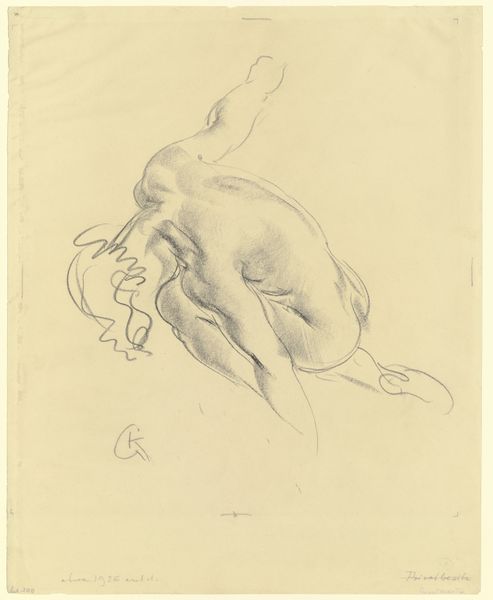
Nick Bottom mit Eselskopf, gehend, einen Arm nach vorn gestreckt, Puck (_) und eine männliche Figur c. 1867 - 1868
0:00
0:00
Copyright: Public Domain
Editor: Here we have Paul Konewka's pencil sketch, "Nick Bottom mit Eselskopf, gehend, einen Arm nach vorn gestreckt, Puck (_) und eine männliche Figur," created around 1867-1868. I'm struck by the starkness of the figures against the plain paper; the donkey-headed figure looks almost haunting. What can you tell me about Konewka's approach to the making of this work? Curator: Well, first notice it's just a sketch. The materials -- simple graphite and paper -- suggest a readily available and inexpensive mode of production. The sketch form bypasses the high art expectation of polish, getting straight to the subject. More significantly, this choice demystifies artistic creation: look, anyone can grab a pencil and represent fantasy figures! Also, Romanticism placed emphasis on accessing subjective emotional states - is that accessed by highly polished expensive work, or in immediacy of process? Editor: That's interesting; it makes the mythological scene feel much more accessible, less intimidating. Is the use of the pencil sketch as a form to get to this idea somehow transgressive at that time? Curator: Exactly! We are seeing Konewka exploring production outside conventional methods, questioning what makes art 'art' and considering the place of labour, skill, and time, in art. Instead, notice Konewka presents labor lightly and economically, rather than being bound by high labor art production which involves lengthy preparation and a range of social, and artisanal relations in art making. But it leaves me wondering about the implications on consumption; if the labour is less where is the artistic value, and can audiences access more easily these representations? Editor: It challenges our modern perceptions of the art-making process. Thinking about Konewka's intent and methods adds layers to what seems, at first glance, to be a simple sketch. Curator: Indeed. Looking beyond the image and engaging with the means of its creation opens a window into the changing status of art and the artist's role.
Comments
No comments
Be the first to comment and join the conversation on the ultimate creative platform.
